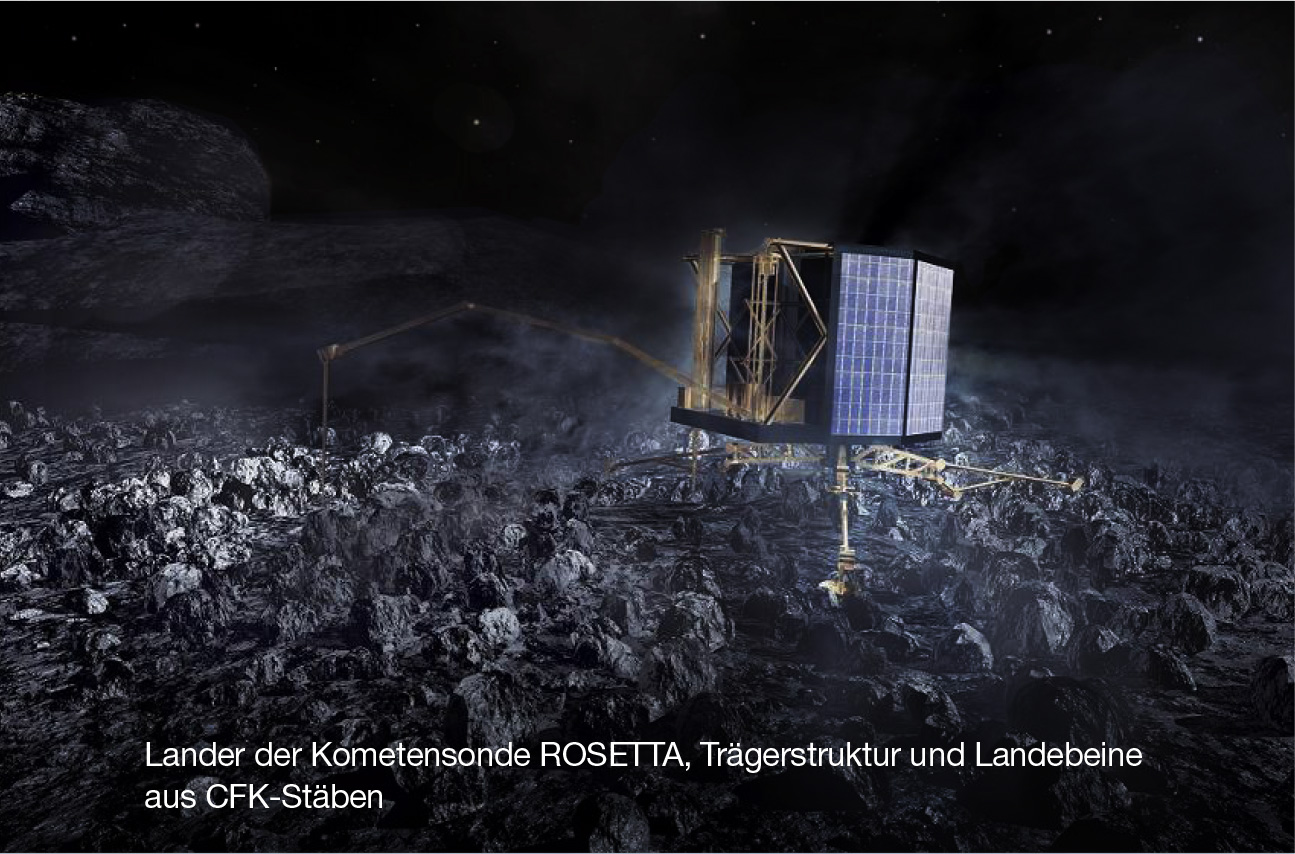AREAS OF APPLICATION
In space flight, the highest demands are placed on the materials and components used. Since the factors of mass, stiffness and strength are of particular importance, CFRP is recommended here for various applications.
The lightweight rods are primarily used as struts in load-bearing structures, as booms for fold-out instruments – for example magnetometers – and as antenna rods.
We also manufacture complex structures from CFRP sandwich panels or thin laminates, or connect rods to form spatial trusses.
In addition, we develop special structures for special requirements, such as a foldable helix antenna.
SPECIAL PROPERTIES
MISSIONS
PROJECT EXAMPLES
The AISat satellite is equipped with a helix antenna for receiving automatically broadcasted ship information (AIS). The antenna has a CFRP structure under a metallic mesh. This can be compactly compressed for launch and extends again in space. The mechanics were tested in parabolic flight.
The truss structure shown here supports the satellite’s solar cells. It is a good example of a structure that is both very light and very rigid.
This structure is used to place an instrument on the surface of Mars as part of the InSight mission. It was developed by the German Aerospace Center (DLR) in Bremen and manufactured by us. In addition to sandwich panels, CFRP sandwich rods are also used in the structure.
After more than ten years, the probe “ROSETTA” launched in March 2004 reached comet 67P/Churyumov-Gerasimenko in August 2014 and set down the lander Philae there on November 12, 2014. The three landing legs and the truss-like support structure of Philae are made of CFRP sandwich bars. While the bar connections of the support structure were made of CFRP half shells, the landing legs were bolted together from CFRP sandwich bars. For this purpose, the individual bars were provided with metallic interface elements at their ends, which were fitted with integrated CFRP sleeves to achieve reliable bonding.





